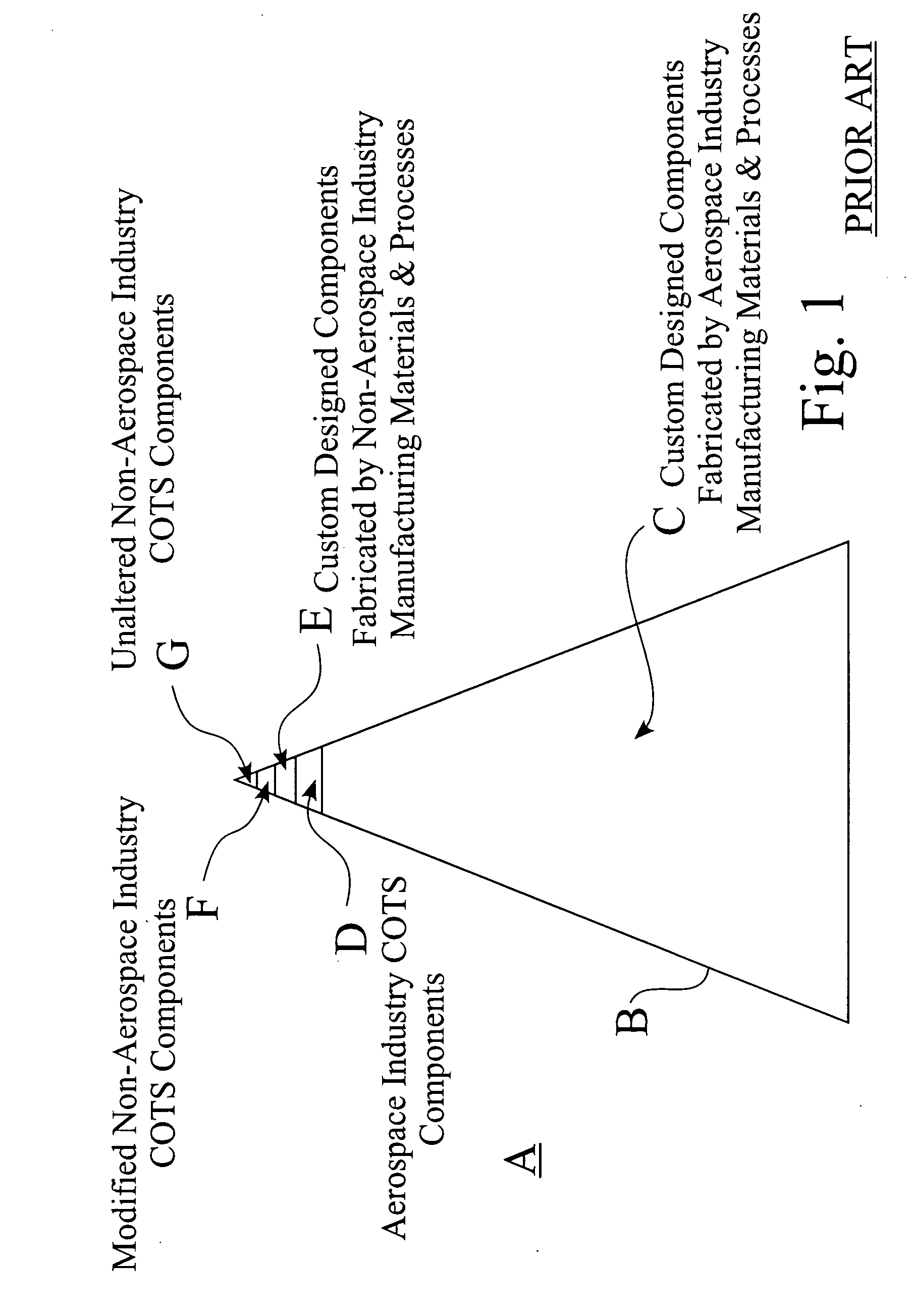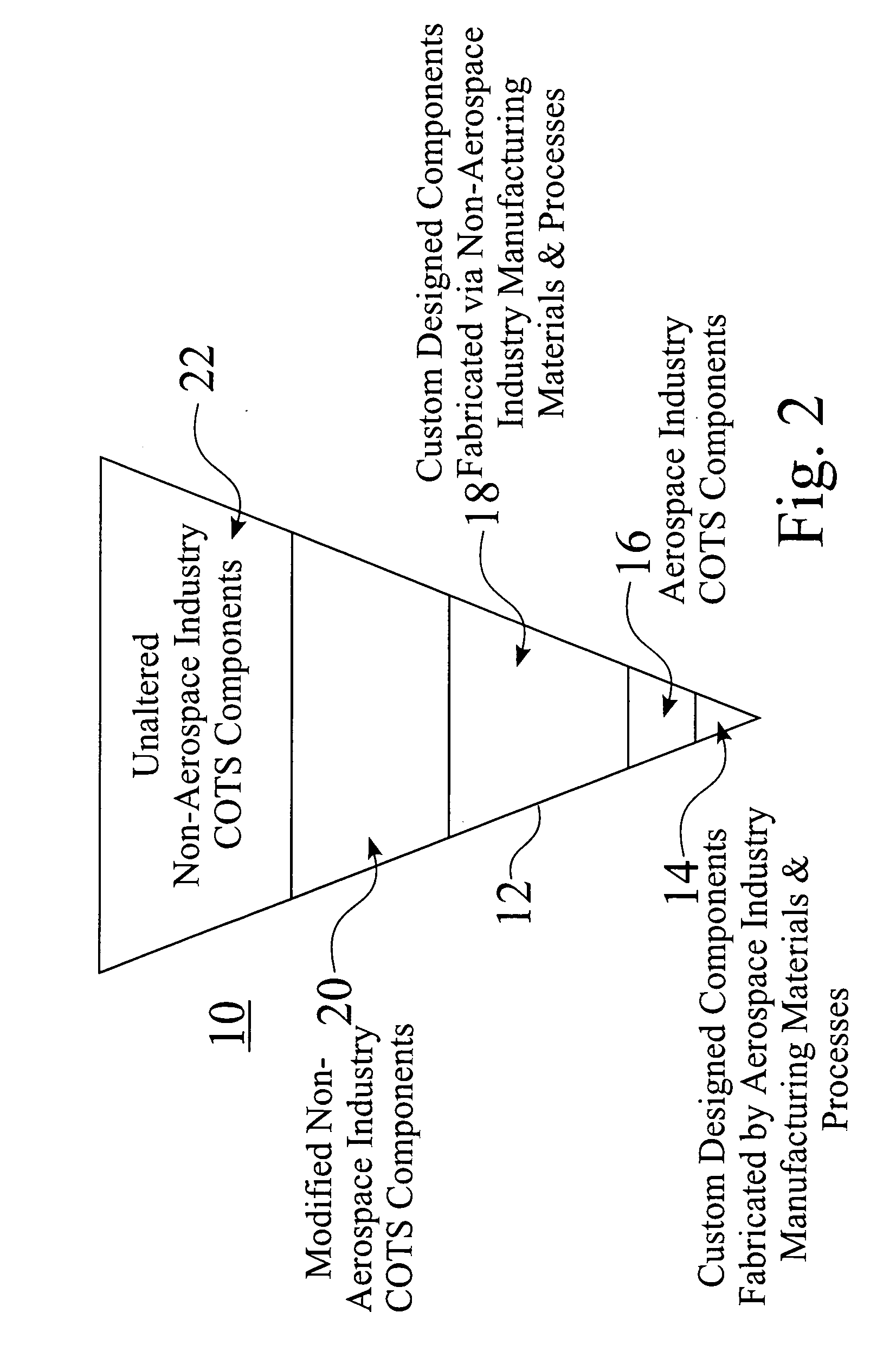Aerospace manufacturing system
a manufacturing system and aerospace technology, applied in the field of methods and equipment, can solve the problems of aerospace raw materials and their associated fabrication processes, aluminum alloys can be very expensive, and the non-aerospace cot system costs only 5-10% of the cot system,
- Summary
- Abstract
- Description
- Claims
- Application Information
AI Technical Summary
Benefits of technology
Problems solved by technology
Method used
Image
Examples
Embodiment Construction
I. Overview of the Invention
[0119]As noted in the Background section, FIG. 1 is a graphical representation A of the relative typical content of an aerospace product produced using conventional aerospace manufacturing methods. The triangle B represents the total product content of a typical aerospace product. The area of each segment of the triangle represents a category of product content, as measured by part counts. The largest segment of the triangle represents custom designed components fabricated by aerospace industry C using conventional aerospace standards and manufacturing materials and processes. For a typical aerospace vehicle, custom aerospace components make up more than 90% of the vehicle; discounting fasteners such as rivets, this number is probably somewhere between 95% and 99%. The other four areas of the triangle, aerospace industry COTS components D, custom-designed components fabricated by non-aerospace industry manufacturing materials and processes E, modified non...
PUM
 Login to View More
Login to View More Abstract
Description
Claims
Application Information
 Login to View More
Login to View More - R&D
- Intellectual Property
- Life Sciences
- Materials
- Tech Scout
- Unparalleled Data Quality
- Higher Quality Content
- 60% Fewer Hallucinations
Browse by: Latest US Patents, China's latest patents, Technical Efficacy Thesaurus, Application Domain, Technology Topic, Popular Technical Reports.
© 2025 PatSnap. All rights reserved.Legal|Privacy policy|Modern Slavery Act Transparency Statement|Sitemap|About US| Contact US: help@patsnap.com



